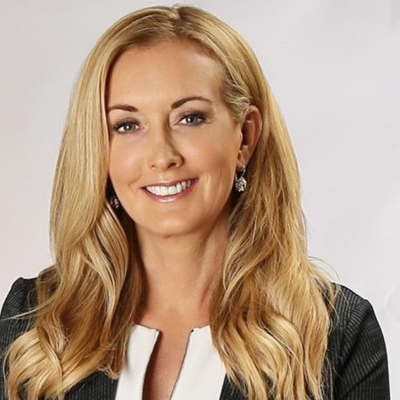On eve of bellwether PFAS trial, chemical giants DuPont, 3M eye billion-dollar settlements
By Carey Gillam and Shannon Kelleher
Just days before the start of a bellwether trial in South Carolina over PFAS contamination of drinking water, DuPont and two related companies said they would pay close to $1.2 billion to settle liability claims brought by public water systems serving the vast majority of the US population.
PFAS maker 3M was reportedly also considering a settlement that would keep the company from having to face allegations that it was responsible for knowingly contaminating drinking water supplies around the United States.
The trial set to start Monday is expected to spotlight long-held secret documents about the chemical giant 3M’s knowledge about the dangers of its per- and polyfluoroalkyl substances (PFAS) and how it worked with DuPont to conceal risks of PFAS from the public.
DuPont and its related companies were recently severed from the case as they negotiated the settlement in which DuPont will pay roughly $400 million; Chemours, a DuPont spinoff, will pay $592 million; and another DuPont-related company, Corteva, will pay about $193 million.
The companies said the settlement excludes personal injury claims due to alleged exposure to PFAS, as well as claims by state Attorneys General about PFAS contamination of natural resources.
Bloomberg reported Friday that 3M was negotiating a $10 billion payout that would resolve claims and avoid Monday’s trial.
Regarding the potential settlement, 3M said in an email to The New Lede “we don’t comment on rumors or speculation.” In a court filing 3M said that it was not liable and that it “never owned, operated, or otherwise controlled the facilities, disposal sites, and other purported sources of PFAS or related compounds.” The company lacked the “necessary controls over its products after the point of sale,” it said in the filing.
The company said in a statement that it is working to stop the use of PFAS across its product portfolio by the end of 2025, even though “PFAS are safely made and used in many modern products.“
4,000 other plaintiffs
The plaintiff in the trial set to start Monday is the small city of Stuart, Florida, which is suing over the contamination of its drinking water with two types of PFAS called PFOS and PFOA that were used in fire-fighting foam by local firefighters.

More than 4,000 other plaintiffs are also part of the broader litigation being overseen by the US District Court in Charleston, South Carolina. The multidistrict litigation (MDL) aims to recover the expenses public and private water utilities are incurring to test, monitor and replace water supplies and to install equipment to try to clear the chemicals from tainted systems.
Stuart, a city of about 17,000 people on Florida’s Atlantic coast, discovered its drinking water wells had been contaminated in 2016 when state regulators informed city officials that some of its well water contained levels of PFOA and PFOS higher than what the Environmental Protection Agency (EPA) considers safe. Ultimately, nearly all of the city’s wells were found to contain some level of PFOA or PFOS.
The city traced the contamination back to “aqueous film-forming foams” (AFFF) the local fire department had used in training exercises for decades, unaware that the work to protect public safety was instead potentially putting it at risk due to the dangerous chemicals in the foam.
The city has since installed an ion exchange filtration system that is designed to reduce the levels of PFOS and PFOA to undetectable levels, said Michael Mortell, Stuart city attorney and interim city manager. The city wants 3M – not the taxpayers – to shoulder the expense. The city is also seeking punitive damages for 3M’s alleged “wrongful conduct”.
The Stuart case, like the thousands of others pending, alleges that 3M knew by the 1970s that PFOA and PFOS could endanger human health and the environment, but decided to hide the knowledge from the public and regulators, and continued to manufacture the chemicals, including for use in the fire-fighting foam.
Attorneys for Stuart are planning to build their case in part on 3M’s own internal records, many of which were made public after Minnesota officials negotiated an $850 settlement with 3M in 2018 over PFAS water contamination the state alleged caused cancers and other health problems in residents.
“They knew that their chemical… was in the blood of the general population, every man, woman and child,” said McWilliams, one of Stuart city’s lawyers. “They deliberated whether or not to tell the EPA. They ultimately decided not to. And then they sat on it for twenty-two years.”
Even after the EPA pressured 3M to stop making PFAS chemicals used in firefighting foam in 2002, the company allegedly failed to warn users and the public about harmful foam that remained on the market or to recall the harmful products.
PFAS, sometimes called “forever chemicals” because they do not naturally break down, have been used in an extensive array of consumer and industrial applications due to their resistance to water, oil and heat, and are present in everything from pizza boxes and pesticides to plastics and paints.
The EPA says PFAS residues persist in water, soil, air and food, and are found in common materials in homes and workplaces. Scientists have additionally determined that the toxins are now commonly found in the bodies of people and animals worldwide. An estimated 97% of Americans have PFAS in their blood, according to a study by the Centers for Disease Control and Prevention (CDC).
“Next to global warming, this is the biggest environmental catastrophe to ever happen,” said Ned McWilliams, one of the lawyers representing the Florida town in the upcoming trial.
Secrets in the spotlight
A collection of some of 3M and DuPont’s internal files dating back to the 1960s were expected to be introduced as evidence, according to plaintiffs’ attorneys.
One internal memo from 1960 described 3M’s knowledge that chemical wastes from its PFAS manufacturing facilities would “eventually reach the water table and pollute domestic wells,” according to the Stuart lawsuit.
Another internal 3M record shows that 3M resisted calls from its own toxicologists going back to 1979 to perform an ecological risk assessment on PFOS and similar chemicals, the lawsuit states.
And a 1999 internal employee resignation letter stated that: “I can no longer participate in the process that 3M has established for the management of [PFAS.] For me, it is unethical to be concerned with markets, legal defensibility and image over environmental safety.”
Testimony from retired 3M toxicologist John Butenhoff is also expected to be presented in the trial. In a video deposition taken before the trial, Butenhoff acknowledged that 3M is more than likely the source for PFOS contamination around the globe, including in air, waters, soil, humans, fish, polar bears and “other Arctic mammals.”
“More likely than not the source is 3M,” Butenhoff states in his testimony.
Many 3M and DuPont’s internal files are cataloged in the University of California San Francisco’s Chemical Industry Documents Library. On June 1, UCSF researchers published a paper analyzing those documents in the Annals of Global Health journal.
The documents show that both 3M and DuPont shared studies and knew PFOA was “highly toxic” when inhaled and “moderately toxic” when ingested by 1970, well before the public health community had such information available, according to the paper.
Among other things, the university researchers detailed how the corporate records show the companies suppressed evidence that PFOA could cause birth defects, even after documenting the fact that dozens of women employees were getting pregnant as they were being potentially exposed to PFOA at company worksites.
The depth of industry knowledge about the dangers and prevalence of PFAS chemicals, and the length of time they hid that knowledge from the public is “shocking” and “shameful”, according to UCSF researcher Tracy Woodruff, who co-authored the document analysis.
This story is co-published with the Guardian.




